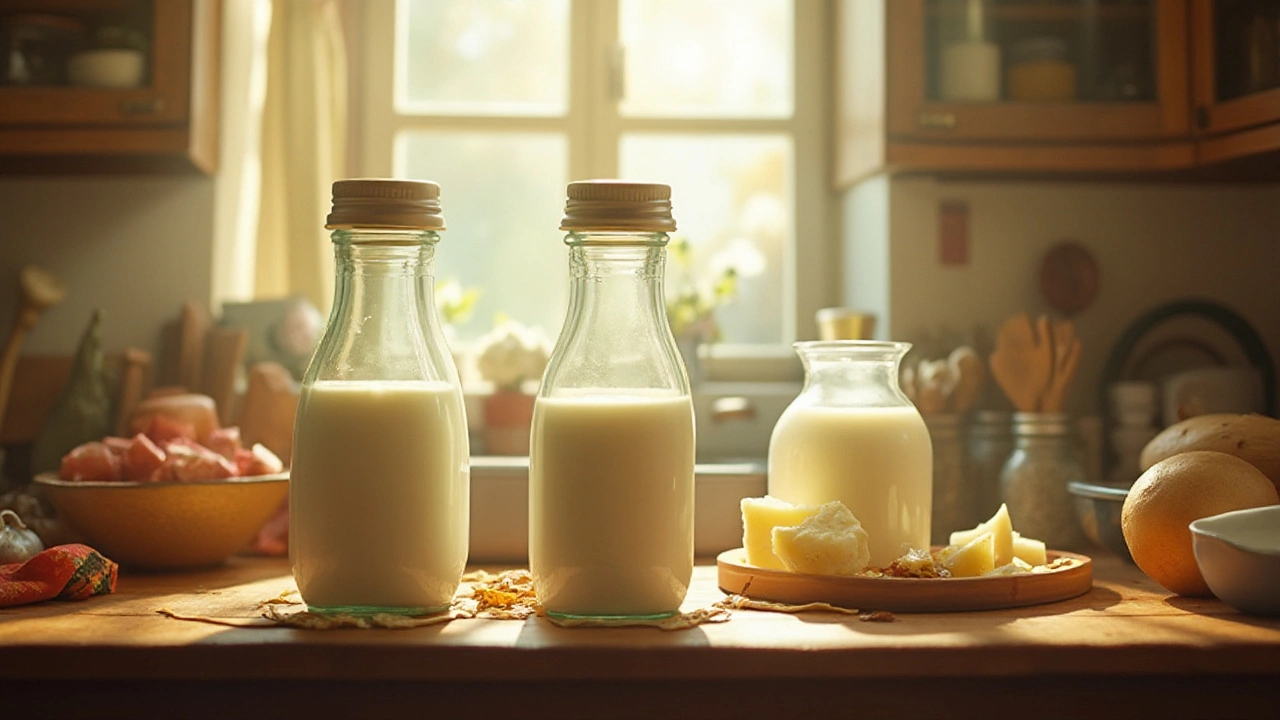Curdling Milk: What Happens and How to Fix It
Ever poured milk into a cup and saw lumps popping up? That’s curdling – the milk’s proteins have clumped together. It can happen with fresh milk, cream, or even when you’re making a sauce. The good news? You can usually stop it or rescue the milk with a few simple tricks.
Why Milk Curds
Milk curdles when the environment gets too acidic or too hot. Acidic ingredients like lemon juice, vinegar, or yogurt lower the pH and make the casein proteins stick together. Heat also speeds up the process – especially if you boil milk quickly or leave it on high heat for too long. Another hidden culprit is old milk. As milk ages, natural bacteria produce lactic acid, which can cause curdling even at low temperatures.
Even a small amount of salty or spicy food can tip the balance. If you’re making a curry or a chocolate sauce, adding salt or spices too early can increase the chance of curdling. Finally, metal pots, especially copper or aluminum, can react with milk’s minerals and speed up curdling. Using stainless steel or heavy‑bottomed non‑stick pans helps keep the milk stable.
How to Prevent and Rescue Curdled Milk
**Start with low heat.** Warm milk slowly over medium‑low flame and stir constantly. This keeps the temperature even and stops the proteins from shocking each other.
**Add acid at the end.** If a recipe calls for lemon juice or vinegar, mix it in once the dish is off the heat. That gives the milk a chance to stay smooth while it’s cooking.
**Use a thickener.** A spoonful of flour, cornstarch, or cream can stabilize milk. Mix the thickener with a little cold water first, then whisk it into the warm milk. This creates a protective layer around the proteins.
**Rescue curdled milk.** If you already see lumps, remove the pot from heat immediately. Whisk vigorously and add a splash of cold milk or water. The sudden temperature drop can help break the clumps apart. For sauces, you can also run the mixture through a fine sieve to catch the curds.
**Pick the right cookware.** Stick with stainless steel, enamel, or heavy‑bottomed cookware. Avoid thin pans that heat unevenly.
**Check freshness.** Smell the milk before you start. If it has a sour note, it’s already on its way to curdling. Fresh milk will last longer and give you a smoother result.
**Salt later, not earlier.** Add salt toward the end of cooking. This keeps the milk from reacting too quickly.
**Cool quickly if you need to store.** Pour any leftover milk or sauce into a shallow dish and refrigerate it right away. Rapid cooling prevents bacterial growth that creates more acid.
With these tips you can keep milk smooth whether you’re making a creamy soup, a latte, or a sweet dessert. The next time you see a lump, remember: low heat, gradual warming, and a quick whisk are your best friends. Happy cooking!
How to Prevent Milk from Curdling While Making Paneer
Making homemade paneer can sometimes lead to the annoying issue of milk curdling unexpectedly. This article offers three effective ways to avoid this problem. Learn about optimal milk selection, controlling temperatures, and using stabilizing ingredients. With practical tips and insights, create smooth and perfect paneer every time.
